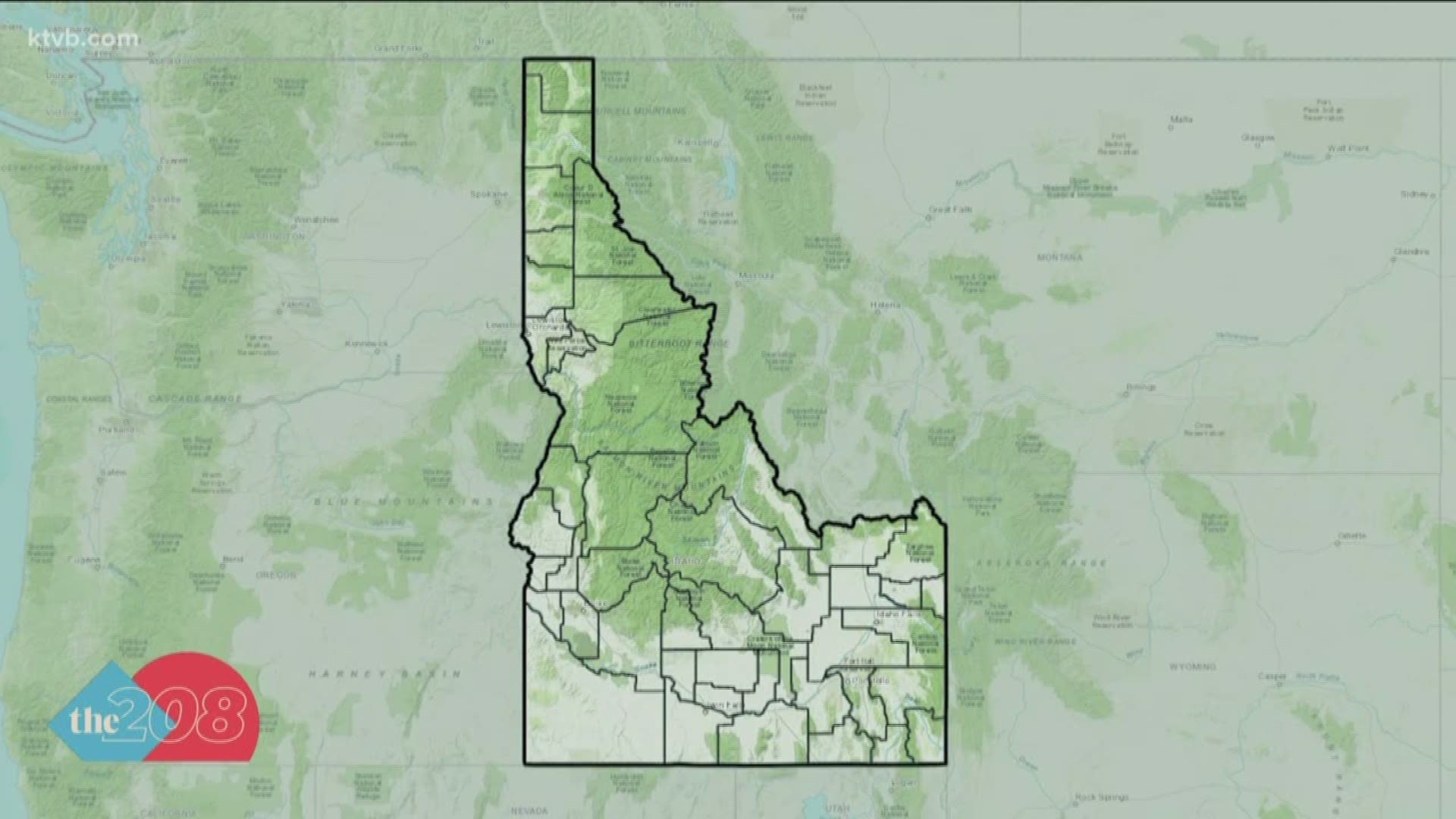BOISE, Idaho — Idaho's border with Montana has been compared to the profile of Winston Churchill, Bob Hope, and even Richard Nixon. But the Gem State's unique border has an even more unique story with how Montanans got one the Chief Justice of the Idaho Territorial Supreme Court to lobby to Congress for its shape.
A retired Idaho state historian has heard all of the weird and crazy rumors of how it ended up like it is. One such theory includes a drunken surveyor.
"Well, um, it's a curious, it's a long story," Keith Petersen laughed.
The Gem State has mostly rectangular borders, much like Congress wanted when they drew up the state borders in the western half of the country. But Idaho's border with Montana bucked that trend.
"They wanted the states that came into the Union in the West to all be very rectangular, which is why we get Colorado, Wyoming, Utah, those sorts of states and for the most part, they did that fairly well," Petersen said. "There are a couple of peculiarities, especially that one with Montana."
The top 70 miles of the Idaho-Montana border are straight, as Congress wanted to impose some form of orderliness on the rugged landscape.
For what looks like a squiggly line for much of the rest of the Idaho-Montana border, you can blame Sidney Egerton, Chief Justice of the Idaho Territorial Supreme Court. Egerton lobbied Congress to draw the border like it is now, but the Idaho legislature had envisioned a much different border.
"The Idaho Legislature wanted to have a border on the Continental Divide, which would have been many miles to the East of where it is today," Petersen said.
However, Montanans had already gotten their hands on Edgerton, so to speak, and persuaded him to lobby Congress to move the border west of the Continental Divide.
"When Edgerton went back, because all of the gold activity was west of that line, he lobbied Congress successfully for a border on the Bitterroots. And there was no one else from Idaho, from the Idaho Legislature back there to talk to Congress," Petersen explained. "And so Edgerton carried the day and when Montana territory was established in 1864, breaking it away from Idaho, they specifically delineated that line along the Bitterroot Mountains."
The Bitterroot Mountains also gave Idaho its famous panhandle.
"That panhandle would not have been nearly as narrow or isolated had the Idaho Territorial Legislature won the day and the border had been on the Rocky Mountains instead of the Bitterroots," Petersen said.
That's how the Gem State got its shape, well, part of it.
"One person can influence history."
Join 'The 208' conversation:
- Text us at (208) 321-5614
- E-mail us at the208@ktvb.com
- Join our The 208 Facebook group: https://www.facebook.com/groups/the208KTVB/
- Follow us on Twitter: @the208KTVB or tweet #the208 and #SoIdaho
- Follow us on Instagram: @the208KTVB
- Bookmark our landing page: /the-208
- And we also turn each episode into a podcast on Spotify or Podbeam
- Still reading this list? We're on YouTube, too:

